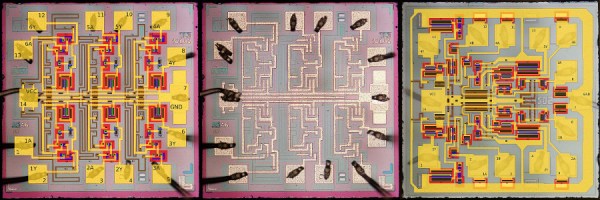If you have followed the group of reverse engineers whose work on classic pieces of silicon we feature regularly here at Hackaday, you may well be familiar with the appearance of the various components that make up their gates and other functions. What you may not be familiar with, however, are the features that can occasionally be found which have no function other than the private amusement of the chip designers themselves. Alongside the transistors, resistors, and interconnects, there are sometimes little pieces of artwork inserted into unused spaces on the die, visible only to those fortunate enough to own a powerful microscope.
Fortunately those of us without such an instrument can also take a look at these works, thanks to the Smithsonian Institution, who have brought together a gallery of them on the web as part of their chip collection. In it we find cartoon characters such as Dilbert, favourites from children’s books such as Waldo, and the Japanese monster Godzilla. There are animals, cows, a leopard, a camel, and a porpoise, and of course company logos aplenty.
In a sense, these minuscule artworks are what our more strident commenters might describe as Not A Hack, but to dismiss them in such a manner would be to miss their point. Even in an age of huge teams of integrated circuit designers working with computerized tools rather than the lone geniuses of old with their hand drafting, we can still see little flashes of individuality with no practical or commercial purpose and with no audience except a very few. And we like that.
Also take a look at the work of [Ken Shirriff] for a masterclass in IC reverse engineering.













